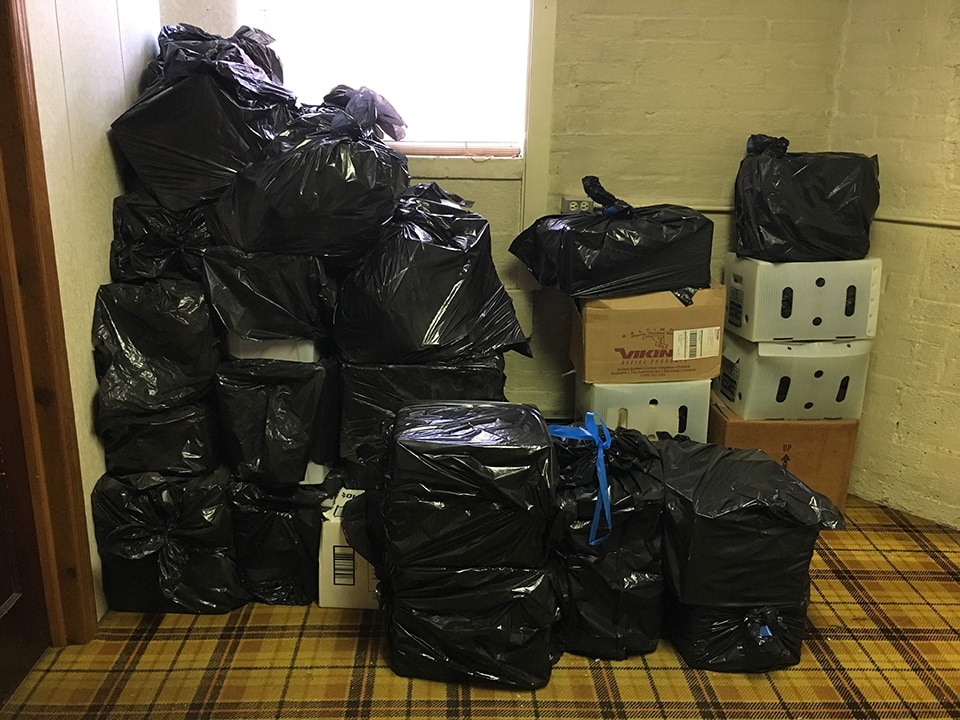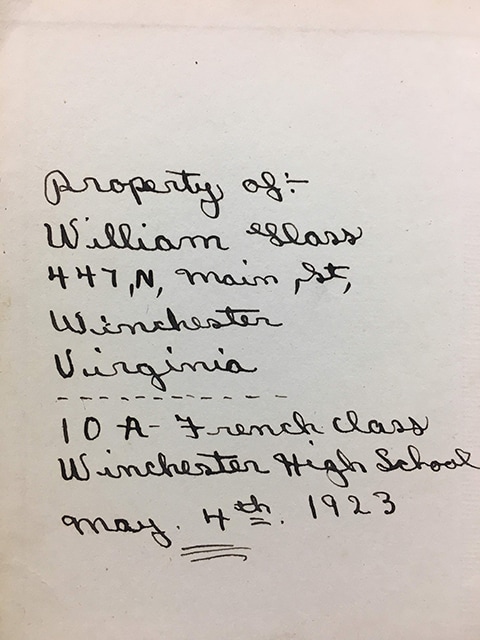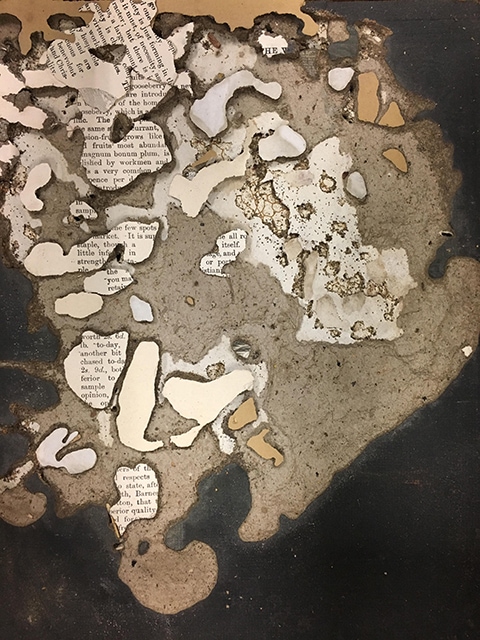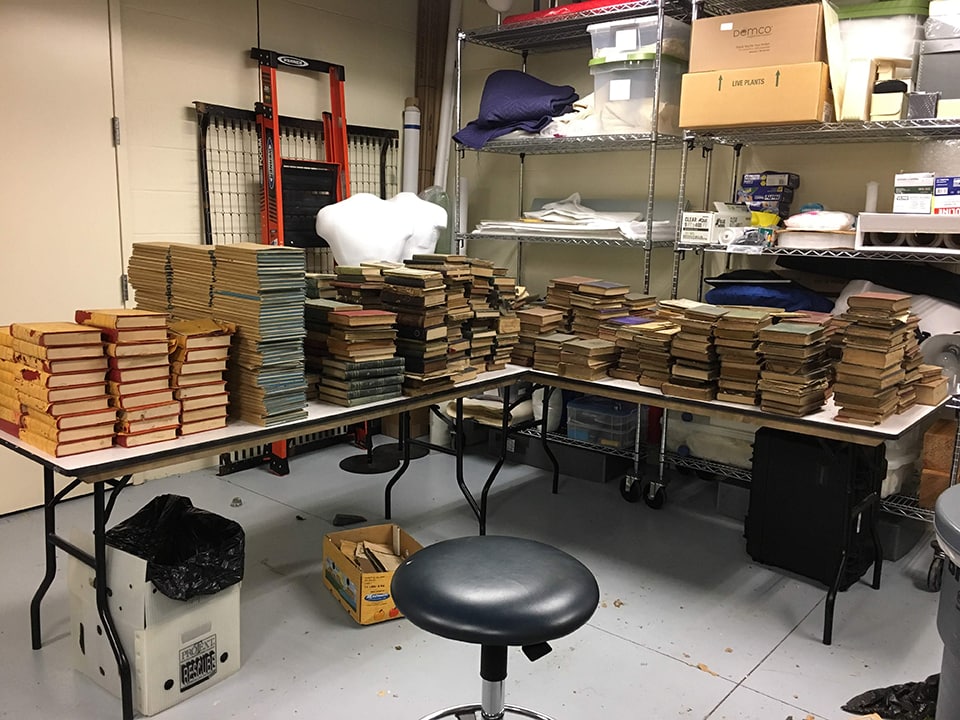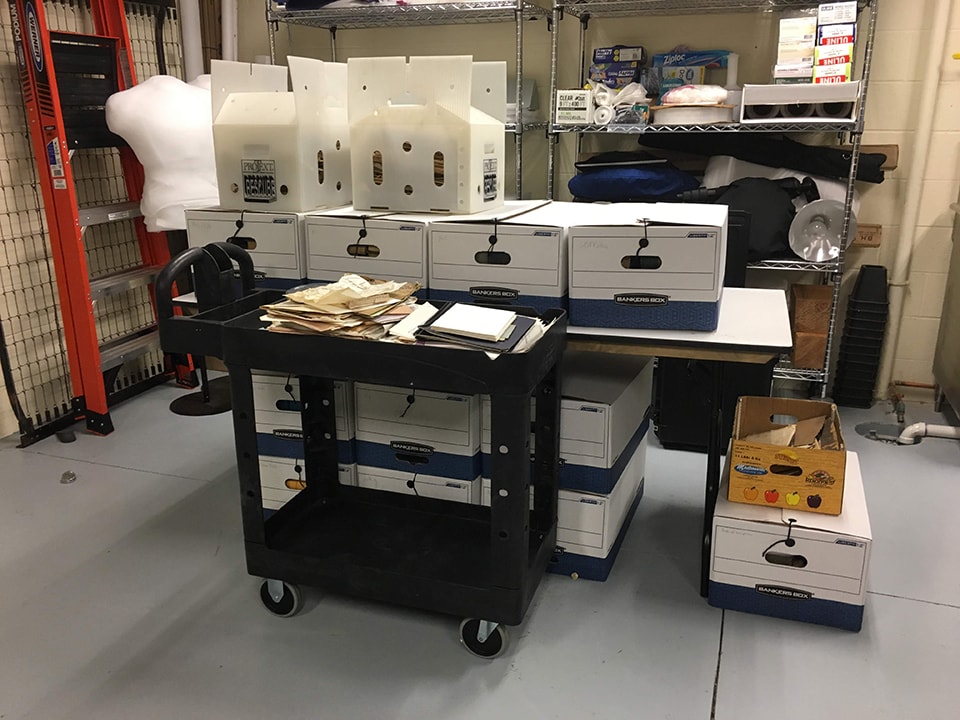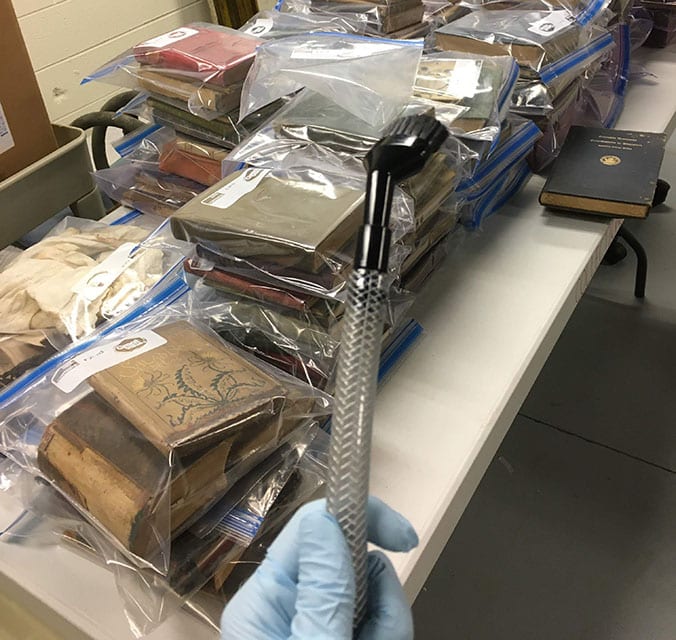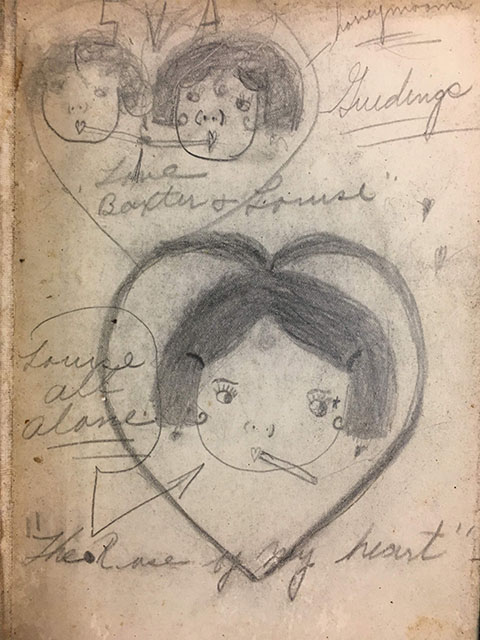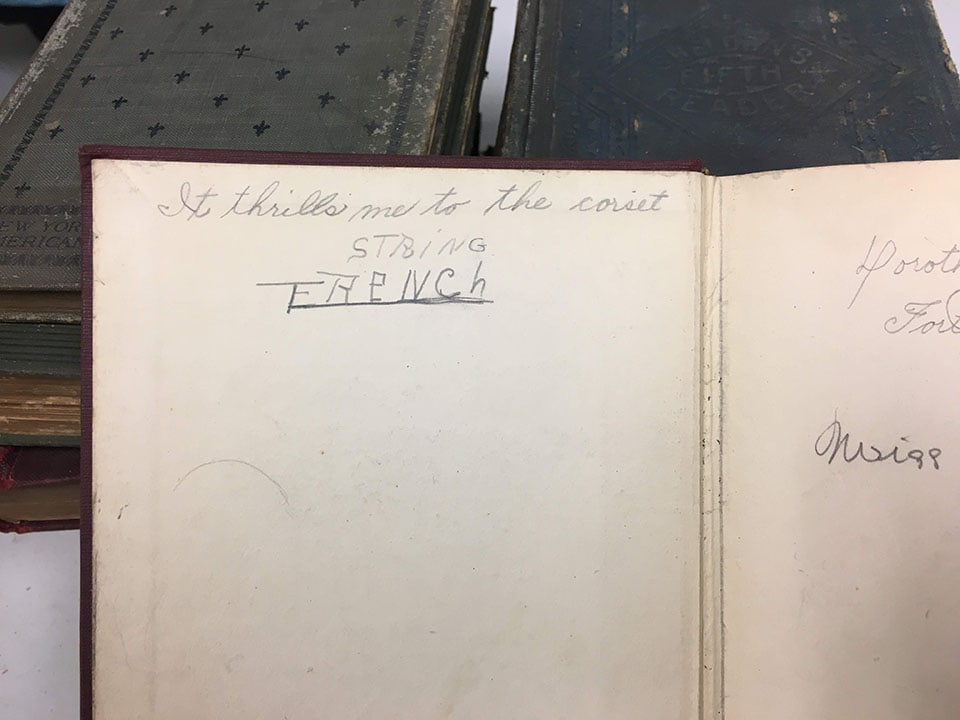There is a saying that history is not always pretty. That sentiment is certainly true of material culture—everyday objects created and used by people in the past.
By Registrar/Collections Manager Lauren Fleming
If you look in your attic or garage you are sure to find brittle family papers, an incomplete set of wedding china from your great grandmother, or a yellowed christening gown from the late 1800s. Such items are precious pieces of family history. They are also items that do not often make it into museum collections because of their condition or unknown origins.
However, to the excited astonishment of curators and museum educators, a collection holding the keys to undocumented history can emerge from a dusty outbuilding. Such was the case earlier this year when the MSV rediscovered a large group of books that had been stored in an attic.
We quickly realized these books belonged to Katherine Rebecca Glass Greene (1865-1948), students at Fort Loudoun Seminary, and members of the Wood-Glass family. As a group they illuminate the subject of women’s education in Winchester during the early 1900s. (To learn more about Kate Glass Greene and the Seminary, check out Curator of Collections Nick Powers’ blog: A Shenandoah Savant.)
The only downside to this collection was its condition. The books were covered in grime, pest damage, and mice droppings. Many smelled of mildew. They could not be brought directly into the museum collection and they were too fragile to be incorporated into exhibits and programs.
How do we handle such a situation? The answer includes respirators, gloves, a HEPA-vac, and a freezer.
In this particular case we followed several steps:
- Isolate the collection in a prep space far away from our galleries and collection storage so we could handle the books without fear of introducing pests and unknown hazards to our collection.
- Wearing respirators and gloves remove the books from the garbage bags and broken boxes.
- Organize the books.
- The majority of the books contain inscriptions indicating ownership. Some books are labeled with “Fort Loudoun Seminary” while others are inscribed with “Glen Burnie Library” or a student’s name. These tags provided a guide for organizing the books.
- Rehouse the organized books in new storage boxes.
- Vacuum each book with a HEPA-vac and place in an airtight bag.
- The HEPA-vac contains a special filter that traps small particles, like mold, enabling us to clean rodent droppings and dirt without blowing toxins back into the air.
- Freeze the books in airtight bags for 6-10 days to kill any active insect infestations. Remove the books and allow them to reach room temperature.
- Freezing is often used by museums as an effective pest control method as it kills living insects but does not cause damaging ice formation within the inorganic object.
- Remove books from their airtight bags and place in trays made of acid-free materials.
- Move the trays of books into storage for permanent housing.
Caring for a damaged collection is never easy and requires caution and planning. To date we have decontaminated and rehoused approximately half of the books that were removed from the attic. As we continue to clean and prepare the books for cataloguing, we glimpse more fascinating tidbits about student life in the Valley and the Wood-Glass family.
